Set in Buenos Aires, from Son’s perspective
I am sitting outside of the school director’s office, one of these uncomfortable plastic chairs the students probably are used to. This British language institute isn’t one of the more famous ones. I found out about it from some ads I saw online, sent an email, and am now hopefully going to get my next job.
It is just my third day in Buenos Aires. A few days in Santiago and I thought, This city is too all over the place for me. I have to get out. A few days in the Southern Cone and I thought, This part of the world is just too cold for me. I flew all the way to the other side of Latin America because I wanted something different, but not in terms of temperature. A few days in Buenos Aires, and I’ve thought, Beautiful buildings everywhere, something that finally reminds me of what I bet the architecture of Spain or Italy would be like. The weather’s a little chilly, but not too bad, typical autumn fare. The wind picks up because there are tall and elegant buildings directing it to its lanes.
As for the people, they’re not always the nicest behaving. Most Argentinians are very white. I have the feeling that they see a person of colour and wonder if I’m out to steal something. Or maybe they are too busy to act nice. Buenos Aires seems like one of those cities in which life takes on the appearance of quickness. I say “the appearance” because even though everyone is running about, I also get the sense that they really don’t have that much going on at all. It’s like their empanadas—the steam runs out quick, but the flavour inside remains soggy for hours.
It’s been about fifteen minutes, past nine, the hour of our appointment. When is the director going to call me in for the interview?
Just as I’m thinking it, the rusty door creaks open and an olive-coloured face with glasses is waving me to come inside. I get off my chair and try to give the woman a handshake, but she avoids my hands even as her face gets closer. I think her lips are puckered, and I am confused.
Her lips go onto one cheek, and I remember that people greet this way in certain parts of the world. I lean in to kiss, but it’s too late. The woman hacks out a chortle.
‘You’re clearly not used to the way we do things,’ she says, in a somewhat forced but accomplished British style of an accent. It’s a little too perfected, if anything, and it makes her put-down that much more grating. I try to put on a smile. Obviously I don’t understand how to do these things. She’s the first local I’ve had to greet like this. In the backpacker hostels, everyone is from another country, and the youngsters who run it are so busy smoking up their cannabis that if they touch someone, it has a very different meaning.
Anyways, I’m thinking about what to say as I follow her into the room.
The woman takes her seat on the other side of her desk and slaps a file down, as if to signal that I should be sitting down on the other side of it. I take my seat and glance about. The room looks like it’s from the era of Eva Perón. There is a purple rug on the floor and posters of famous Argentinian intellectuals whom I can’t quite recognise. One is Borges, one looks like an actor, and some have the stare of politicians. There is a dusty smell to the room. I am glad I am wearing my mask, or I might be sneezing. Cabinets are open, files are laid out all over, and a half-drunk 1ate container is by her computer. She is even lighting a cigarette for herself as she opens up the file.
She is so different from the last boss I had in Mexico City.
I sit there awkwardly, not saying anything. She looks back alertly at me, as if she has remembered she was the one who called me in. She clears her throat and keeps the file in front of her eyes.
‘So, you are looking to teach English in Buenos Aires?’
‘Sí, señora.’
She gives me a little snubbing look through her glasses.
‘You can speak to me in English.’
And I thought my Spanish pronunciation was improving. ‘Yes, yes,’ and I add in Spanish for good measure, ‘Claro que sí.’
She opens one of the files and looks at something. She goes on, ‘So, you haven’t done an official course.’
‘A CELTA or TEFL? No.’
‘And you don’t have much work experience?’
‘I’ve taught a bit in Mexico, but otherwise, no.’
The director swats a bit of the air with her cigarette.
‘Then, why do you think we should hire you?’
I swallow the air, because I’m feeling a very annoyed swirl of emotion in my chest. It would be very easy for me to say exactly what I’m thinking.
Well, why not hire me? I’m a native speaker. Isn’t that enough? I didn’t hear a single native speaker when I was coming up to your office. I bet I could teach these students a more natural English register than your put-on British affect.
But I don’t say that, because I know being a teacher has little to do with pronunciation. The truth is, I might not know grammar better than any of these Argentinians, who probably have decades of experience.
I tell her instead what I’m feeling.
‘Look, señora, I just got into Buenos Aires, and I’m loving it here. Really, your country is amazing. And after spending so many months in Mexico and hating every second of it, I’d really love to be in a place where I’m happy, you know what I mean?’
The director smiles politely, strangely, and then types at her computer.
‘There are a lot of schools here who would hear your perfect English and hire you. We’re not one of them.’
She puts the papers she was looking at back into the file, and I’m able to get a quick glance at them. Huh. It wasn’t actually my résumé she was looking at, just some internal tax returns that she was reviewing while talking to me.
So, I have my answer. I know how seriously she takes me. I stand up and thank her for her time. But in a bid to be just a little snarky, I also say, ‘I know there are many more schools willing to consider me. I’d be more than happy to be considered by them.’
The director smiles. I’m thinking she’s a little charmed by my temerity, but then she says, ‘I wouldn’t recommend you interview with them, either.’
I push the chair closer to her desk. A lot of emotion is coming out, and I don’t know why.
‘Because you think I’m not good enough for it?’
The director has finished her cigarette. She’s only been smoking it for a few minutes. I’m sure it has plenty more tobacco, and yet she’s snuffing it in her ashtray. And yet she’s looking at me, with the smoke fuming between us. I might have shown a bit too much of my insecurities.
But she’s looking like she’s feeling really sorry for me.
‘No, mi amor. Look at the state of this country you claim to have fallen in love with. We’re having some of the worst inflation in the world. Most of our population is going homeless. Even the teachers we already have, we are considering firing. There’s no space for anyone to come into this country and teach. That’s not just at this school, but any school.’
No, that can’t be true, is my first gut reaction. I’ve hopped all around Central America. I’ve spent hundreds of US dollars to get here all the way from Mexico. I’ve wasted money going up and down this country and Chile and god knows where else it’ll have to be if I don’t get a job here.
There’s no reason to say any of this to her face. She clearly has a busy day ahead of her. I tell her goodbye and take my leave. She doesn’t kiss me again on the cheeks, just shows me to the door, a fresh cigarette in her wrinkled fingers. I take the stairs three storeys down and out of the building.
This director was nice enough, but also not really, and it’d be a little bit of a cliché if I ended up working for some British school all the way in Argentina. I’m better than that.
I’m better than this, is all.
I get out of the school and am immediately greeted by the August chill. It’s a cold breeze that puts me back into the moment. People all around me are wearing sweaters or jackets. I’m probably the only one not well covered up. My hostel is just on the other side of some of these buildings, in a small lane next to a huge avenue, on the other side of one of the city’s major theatres. I’m not in the mood to head there yet. There’s a side of the city that’s on the port. I feel like going in that direction.
The director is right. There are a lot of homeless people about. The person cleaning the rooms at the hostel explained it away to me a few days ago, that all of it is recent, from the inflation and COVID. I was glad to hear it, but I knew she was telling it to me to make me less concerned about how poor Argentina looks. And that worked for a while. I stopped thinking about how discomforting or not it was to see so many people on the streets.
I never put that into the context of what it would mean if I were to try to work here, and in terms of the future of this city and country as a whole. It doesn’t matter how much the colours on these buildings gleam if the people under them are starving.
And that contrast is getting worse. The closer one gets to the port, the taller and more ostentatious the buildings get. It feels like you’re in the thick of New York or Chicago, with skyscrapers all around you. Not that I’ve been to either, but again, that’s just the foreigner’s feeling I am getting. But then at each side end of the boulevard is a person coming up to me and asking for pesos. I say no once, I say no twice, and by the third time I’m aggravated.
Why do I want to take work opportunities from people here, when all I have to do to have a good standard of living is go back home?
It’s been fifteen minutes of walking. I want to go to the port, but I’m also getting tired. I think I’ll have breakfast—some empanadas will be good. I find a place that has a clear queue of hungry people and decide to stand in it. This must mean the place is good.
I get to where I can order and see the sweat on the cashier’s face, and I think, Is it crowded because everyone likes the empanadas, or is it the only thing people nowadays can afford?
I try to order in my bad Spanish. The cashier gets impatient and says something firm with me. I don’t understand because I don’t know Spanish, and she makes a very angered face, passionately swatting the air with her hands and shouting on in her language. A person pulls me aside. I think they’re going to help, but they push me away. Others in the line move forward. One by one they get their empanadas and leave. I’m thinking someone, just anyone, who speaks English will soon come up and help me order, but no one does.
I feel so angry and humiliated that I force myself to go.
This is nothing like Mexico. There, at least, they would have made an effort to help. The people I met liked getting to know foreigners. And if someone didn’t understand me, they might not have liked it, but they were at least polite.
Maybe I shouldn’t have left. It was getting boring, but every place gets boring. I made a huge gamble in coming here, and I just have to accept that it’s most likely not going to pay off. I can hop to Brazil, I can go up north towards Bolivia, but that doesn’t mean that any of it is going to work out.
A calmer voice in my head is trying to tell myself, If it’s meant to be, it’s meant to be. Let it go.
In reality, there’s nothing but tension running up and down my throat.
“Fuck Buenos Aires,” I shout.
I didn’t want to say that out loud, and now people are staring.
“Fuck Buenos Aires,” I say again.
This time some young guys are looking at me with a smile, nodding to themselves.
“Fuck Buenos Aires,” I say, this time laughing at myself.
I like this city. I really do. People are a little too blunt, people show frustration more than what I’m used to, but I’m still at peace at the end of the day, standing here, with the flow of traffic all about me, with the cedars and the buildings. If I’m not able to find teaching work once classes start, and prices are indeed going up, well, that’s no good news at all. But if I like it here, then I like it here. That is it. I have to give it a shot. There’s nothing wrong with trying a few other interviews here or there. I have the rest of the day—no, I have the rest of the month. I can try to scrounge something up.
I have to have faith in the possibility of being successful in what I want. We need that faith to go anywhere, literally anywhere in life. Otherwise there’s not a chance at all that I will pull through. I’ll go give myself that faith, even if no one else has it in me.
The only one who can give myself space to be in this world is myself.
We are all in our own ways trying to survive—and that includes me.
(KIRAN BHATi is a global citizen formed in a suburb of Atlanta, Georgia, to parents from Southern Karnataka, in India. I think since I was a teenager I was interested in global themes. Around seventeen, I re-member wanting to tell people I wanted to write a collection of stories for each country in the world, telling a myriad of tales of things happening there. For more details about his journey to over 100 countries in the world, please visit: Kiran Bhat – A a playspace for one person who pretends to be seven billion people at once. (kiranbhatweldgeist.com)


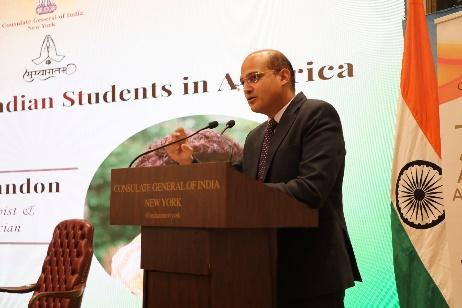
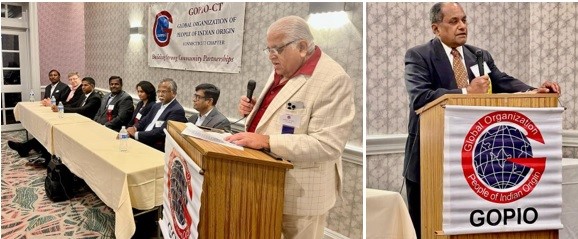 The high-profile panel included Entain CIO Joseph Simon, Eminent Software Services Managing Partner Srikanth Dasugari, Immigration Attorney David Nachman, 3Lines COO Nandu Kuppusamy, Maganti IT Resources President Prasad Maganti, eNcloud Services President Chandra Sekhar Nallam and Maganti IT Resources CTO Sushma Maganti.
The high-profile panel included Entain CIO Joseph Simon, Eminent Software Services Managing Partner Srikanth Dasugari, Immigration Attorney David Nachman, 3Lines COO Nandu Kuppusamy, Maganti IT Resources President Prasad Maganti, eNcloud Services President Chandra Sekhar Nallam and Maganti IT Resources CTO Sushma Maganti. Following tradition, the event commenced with the lighting of the lamps by the Young Hindus of Greater Houston and Hindu Heritage Youth Camp followed by dignitaries and distinguished guests. A soul stirring musical ensemble by the youth of Houston raised the piety of the evening.
Following tradition, the event commenced with the lighting of the lamps by the Young Hindus of Greater Houston and Hindu Heritage Youth Camp followed by dignitaries and distinguished guests. A soul stirring musical ensemble by the youth of Houston raised the piety of the evening. 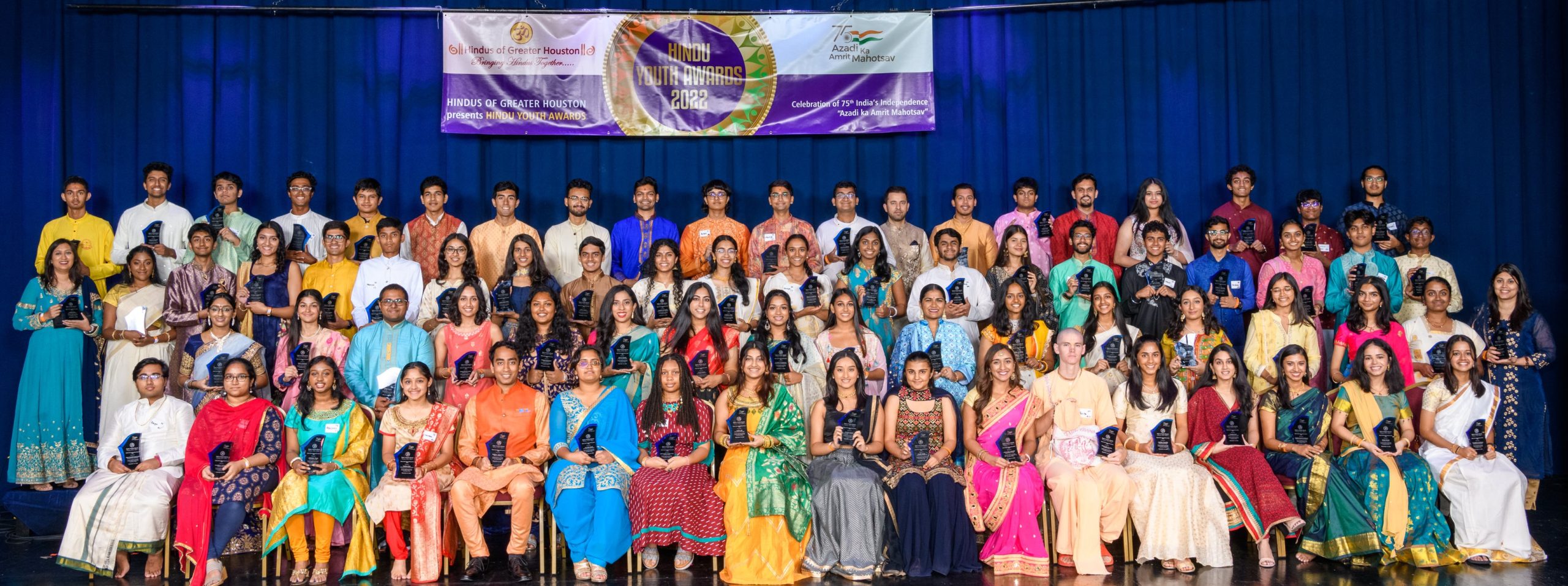 The event concluded with a delicious dinner catered by Indian Summers and a surprise 75-item dessert station. The idea of the 75-item dessert station cropped up during a conversation between Meenakshi temple Council Chair Dr. Padmini Ranganathan and HGH Past President Partha Krishnaswamy. The sweets were prepared by BAPS Shayona and Bombay Sweets while Nalini Kannan of Decor One decorated the dessert station in tune with the theme of the evening.
The event concluded with a delicious dinner catered by Indian Summers and a surprise 75-item dessert station. The idea of the 75-item dessert station cropped up during a conversation between Meenakshi temple Council Chair Dr. Padmini Ranganathan and HGH Past President Partha Krishnaswamy. The sweets were prepared by BAPS Shayona and Bombay Sweets while Nalini Kannan of Decor One decorated the dessert station in tune with the theme of the evening. 
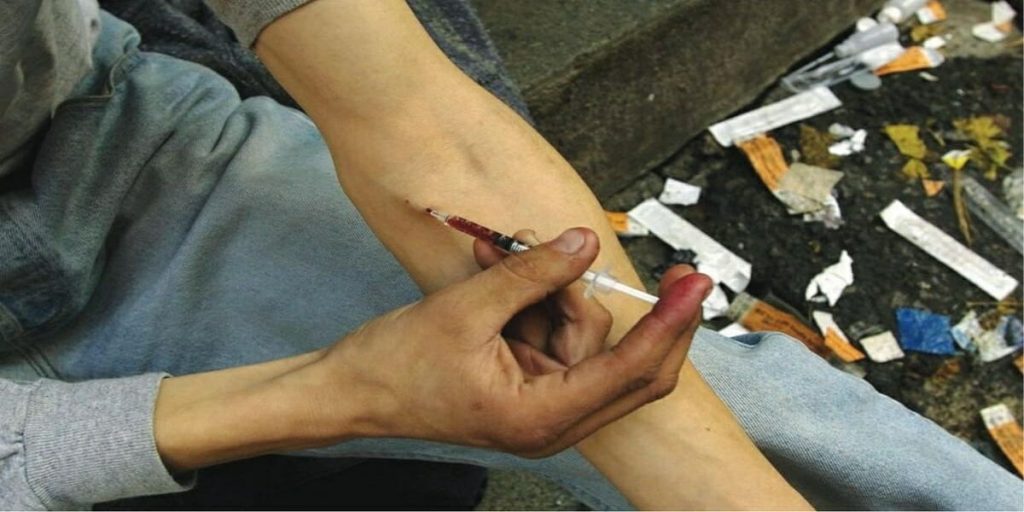 The burden of fatal and nonfatal overdoses among those who inject drugs has also gone up sharply, according to CAMP’s research. Injection-related overdose deaths tripled from 2007 to 2018. Data also shows that there are about 40 nonfatal overdoses for every fatal overdose of IDU.
The burden of fatal and nonfatal overdoses among those who inject drugs has also gone up sharply, according to CAMP’s research. Injection-related overdose deaths tripled from 2007 to 2018. Data also shows that there are about 40 nonfatal overdoses for every fatal overdose of IDU. 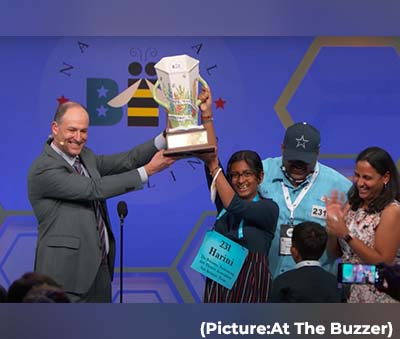 Although she missed a few words, Harini said she knew all the ones she spelled correctly. As for her speedy spelling strategy, she said she “did practice for the spell-off a bit,” but in the end the secret to her success was to “go in fast would [and] really just be focusing on the word, just reading all of the information as quick as I could and keep on going.”
Although she missed a few words, Harini said she knew all the ones she spelled correctly. As for her speedy spelling strategy, she said she “did practice for the spell-off a bit,” but in the end the secret to her success was to “go in fast would [and] really just be focusing on the word, just reading all of the information as quick as I could and keep on going.” “Congratulations Fr. Mathew Chalil for being inducted into Nova Southeastern University Cornerstone society today,” a statement issued by the University stated. “We have created a scholarship fund of 1 Lakh Dollars (77 Lakhs Indian Rupees). The $100,000 scholarship will be earmarked for international medical students at NSU MD with significant financial needs.”
“Congratulations Fr. Mathew Chalil for being inducted into Nova Southeastern University Cornerstone society today,” a statement issued by the University stated. “We have created a scholarship fund of 1 Lakh Dollars (77 Lakhs Indian Rupees). The $100,000 scholarship will be earmarked for international medical students at NSU MD with significant financial needs.” Publisher of The Universal News Network (
Publisher of The Universal News Network (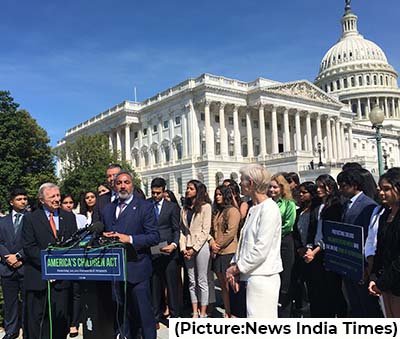 Immigration Forum notes that “As a result of being Documented Dreamers, these children are left out of policies and solutions meant for Dreamers because they are technically not undocumented. This leaves them with
Immigration Forum notes that “As a result of being Documented Dreamers, these children are left out of policies and solutions meant for Dreamers because they are technically not undocumented. This leaves them with  Dr. Abraham also spoke on the Welcome Dinner for new students from India at the UConn Business School at Stamford and Hartford campuses organized by GOPIO-CT and hoping to do the same in the Hamden/New Haven area.
Dr. Abraham also spoke on the Welcome Dinner for new students from India at the UConn Business School at Stamford and Hartford campuses organized by GOPIO-CT and hoping to do the same in the Hamden/New Haven area.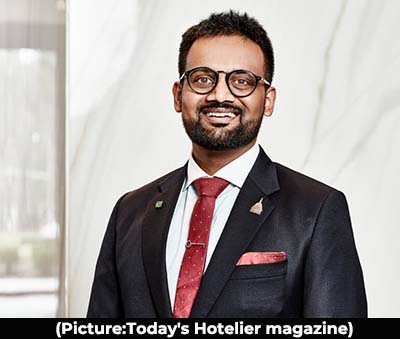 “If you’ve ever wondered to what extent AAHOA serves its membership, I am a perfect example,” Patel said. “My parents didn’t have the opportunity to have AAHOA as a resource, but thankfully, when I took over the family business, AAHOA was there for me as I navigated the hospitality industry. AAHOA provided me with the educational tools I needed to run a hotel successfully.”
“If you’ve ever wondered to what extent AAHOA serves its membership, I am a perfect example,” Patel said. “My parents didn’t have the opportunity to have AAHOA as a resource, but thankfully, when I took over the family business, AAHOA was there for me as I navigated the hospitality industry. AAHOA provided me with the educational tools I needed to run a hotel successfully.”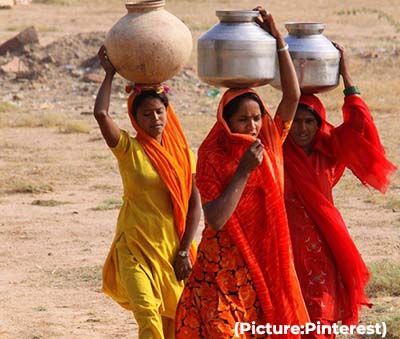 The constituency is home to Muslims, upper-caste Hindus and thousands of impoverished people belonging to communities who have been living for decades in makeshift shanties, often on the bank of open drains. Some are daily wage earners, and others are without paid work.
The constituency is home to Muslims, upper-caste Hindus and thousands of impoverished people belonging to communities who have been living for decades in makeshift shanties, often on the bank of open drains. Some are daily wage earners, and others are without paid work.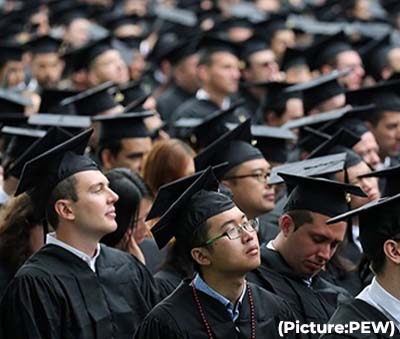 Here are key facts about American college graduates.
Here are key facts about American college graduates.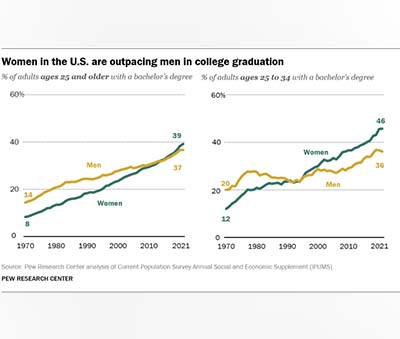 In an
In an 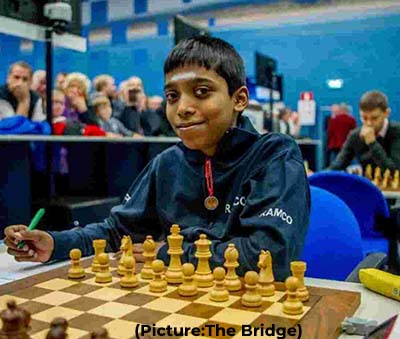 Praggnanandhaa entered the final round on Tuesday sharing the lead with Warmerdam and Andersen at 6.5 points. The two players from Scandinavian countries played out a 16-move draw on the top board, opening up a chance for the Indian GM from Chennai to win the last round and claim the title.
Praggnanandhaa entered the final round on Tuesday sharing the lead with Warmerdam and Andersen at 6.5 points. The two players from Scandinavian countries played out a 16-move draw on the top board, opening up a chance for the Indian GM from Chennai to win the last round and claim the title.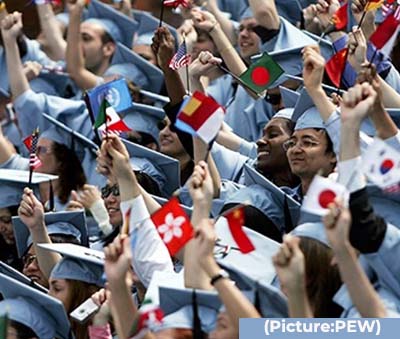 For prospective international students, the past two years have posed intense challenges. The public health crisis disrupted travel worldwide in 2020 and 2021 and threw college enrollment plans into chaos.
For prospective international students, the past two years have posed intense challenges. The public health crisis disrupted travel worldwide in 2020 and 2021 and threw college enrollment plans into chaos.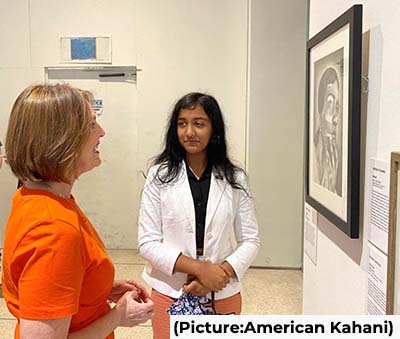 Ms Karthik’s self-portrait tackles perception versus reality.”I wanted to see if I could draw myself as I am and not how I think I am,” she said.
Ms Karthik’s self-portrait tackles perception versus reality.”I wanted to see if I could draw myself as I am and not how I think I am,” she said. Anushree was recognized at Trumbull High School in 2021 for earning the Outstanding Vocal Music Achievement Award. Her passion for music and art goes to her very young age. The older daughter of Unni and Radha Thoyakat, Anushree started singing for Freshmen Choir and was lucky to be a student of Ms. Anne Tornillo, the pervious Choral Music director at Trumbull High who retired in May 2020. Encouraged by her current music teacher Mr. Chris Wasko in her current endeavors. “None of her musical accomplishments in and out of school would have been possible without the foundational guidence and support from the Trumbull High Music Department. I am forever grateful to all who have shown their love and kind words,” Anushree says with modesty.
Anushree was recognized at Trumbull High School in 2021 for earning the Outstanding Vocal Music Achievement Award. Her passion for music and art goes to her very young age. The older daughter of Unni and Radha Thoyakat, Anushree started singing for Freshmen Choir and was lucky to be a student of Ms. Anne Tornillo, the pervious Choral Music director at Trumbull High who retired in May 2020. Encouraged by her current music teacher Mr. Chris Wasko in her current endeavors. “None of her musical accomplishments in and out of school would have been possible without the foundational guidence and support from the Trumbull High Music Department. I am forever grateful to all who have shown their love and kind words,” Anushree says with modesty.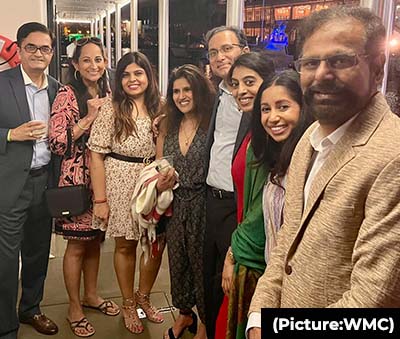 The feedback from the conference has been overwhelmingly positive with higher than projected attendance and record number of new attendees. A few highlights include Dr. Latha Ganti’s research workshop which taught members how to maximize their publication productivity. Dr. Bobby Mukkamala empowered physicians.
The feedback from the conference has been overwhelmingly positive with higher than projected attendance and record number of new attendees. A few highlights include Dr. Latha Ganti’s research workshop which taught members how to maximize their publication productivity. Dr. Bobby Mukkamala empowered physicians.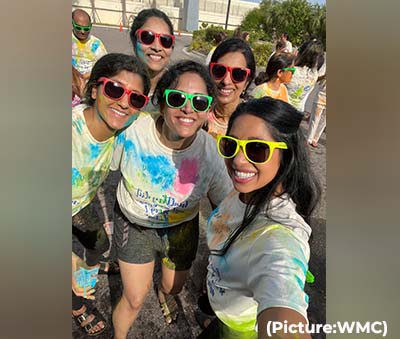 In addition, the Inaugural Kakani Foundation Award was bestowed on the very deserving Bhavana Patil. We thank AAPI EC, BOT, the Kakani Foundation, and all our sponsors, without whom this event would not have been possible.
In addition, the Inaugural Kakani Foundation Award was bestowed on the very deserving Bhavana Patil. We thank AAPI EC, BOT, the Kakani Foundation, and all our sponsors, without whom this event would not have been possible.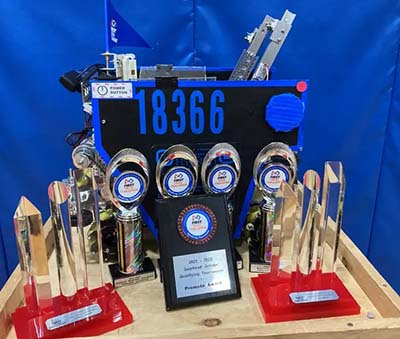 Incorporated in 1797, Trumbull town was named after Governor Jonathan Trumbull of Lebanon, Connecticut. Located 5 miles north from the Long Island Sound, among the most virant towens in the Fairfield County in the state of Connecticut, this vibrant community offers New England charm with extensive retail, outdoor recreation, and dining options. Known for its diversity, Trumbull has a fast growing Indian American community, which excels in academia with the students of Indian American parents rank among the highest in educational achiements.
Incorporated in 1797, Trumbull town was named after Governor Jonathan Trumbull of Lebanon, Connecticut. Located 5 miles north from the Long Island Sound, among the most virant towens in the Fairfield County in the state of Connecticut, this vibrant community offers New England charm with extensive retail, outdoor recreation, and dining options. Known for its diversity, Trumbull has a fast growing Indian American community, which excels in academia with the students of Indian American parents rank among the highest in educational achiements.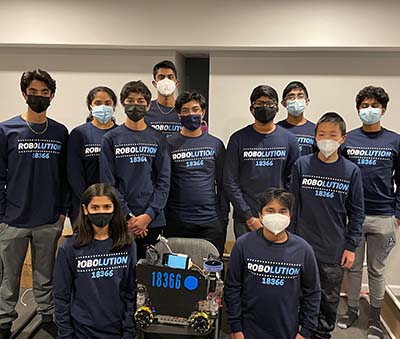 Trumbull Robotics Team won the 1st 1st place at Connect Award, which “is given to the team that most connects with their local science, technology, engineering, and math (STEM) community. We were recognized for helping our local community connect with STEM and actively helping our local community explore opportunities available in STEM.”
Trumbull Robotics Team won the 1st 1st place at Connect Award, which “is given to the team that most connects with their local science, technology, engineering, and math (STEM) community. We were recognized for helping our local community connect with STEM and actively helping our local community explore opportunities available in STEM.”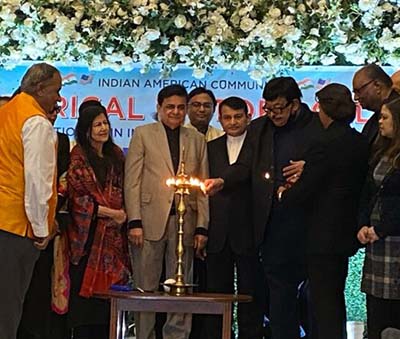 “Team Robolution had a very successful day at the CT State Championship on February 26th, 2022, winning first place for both the Connect and the Promote Award and second place for the Inspire Award. In addition to the team’s achievements, junior Aarav Parekh was one of two individuals in the state nominated as a 2022 Dean’s List Finalist. Robolution’s success has qualified them as one of the two teams to represent the state of Connecticut at the FTC World Championship in Houston this April,” the Team’s website stated.
“Team Robolution had a very successful day at the CT State Championship on February 26th, 2022, winning first place for both the Connect and the Promote Award and second place for the Inspire Award. In addition to the team’s achievements, junior Aarav Parekh was one of two individuals in the state nominated as a 2022 Dean’s List Finalist. Robolution’s success has qualified them as one of the two teams to represent the state of Connecticut at the FTC World Championship in Houston this April,” the Team’s website stated. Hughes shared that the idea for the record began during the
Hughes shared that the idea for the record began during the 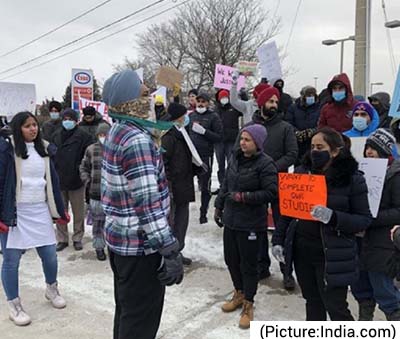 The abrupt school closures prompted scores of panicking international students from India to flock to the Indian High Commission in Ottawa for assistance, as many of them had been forced to come up with thousands of dollars in fees without warning, only to have their education halted.
The abrupt school closures prompted scores of panicking international students from India to flock to the Indian High Commission in Ottawa for assistance, as many of them had been forced to come up with thousands of dollars in fees without warning, only to have their education halted. Lydia pressed her parents all year to allow her to take the intelligence test, which she finally took during her school break. Sebastian completely downplayed the super tough exam–going so far as to call it “easy.” “At first, I was really nervous but once I started, it was much easier than I expected it to be and then I relaxed, she said. “I gave it my best shot really.”
Lydia pressed her parents all year to allow her to take the intelligence test, which she finally took during her school break. Sebastian completely downplayed the super tough exam–going so far as to call it “easy.” “At first, I was really nervous but once I started, it was much easier than I expected it to be and then I relaxed, she said. “I gave it my best shot really.” “Harvard celebrates and nurtures individuality as intensely as this nation. Those who challenge our admissions policies would ask us to rely upon a process far more mechanistic, a process far more reliant on simple assessments of objective criteria. Each of us is, however, more than our numbers, more than our grades, more than our rankings or scores.
“Harvard celebrates and nurtures individuality as intensely as this nation. Those who challenge our admissions policies would ask us to rely upon a process far more mechanistic, a process far more reliant on simple assessments of objective criteria. Each of us is, however, more than our numbers, more than our grades, more than our rankings or scores. The Women’s Forum organized by Dr. Seema Arora, Dr. Udaya Shivangi, Dr. Meher Medavaram, Dr. Malati Mehta and Dr. Uma Jonnalagadda, had a galaxy of successful women, who shared with the AAPI delegates their own stories of growing up and facing challenges with conviction and courage, and have today become role models for other women around the world.
The Women’s Forum organized by Dr. Seema Arora, Dr. Udaya Shivangi, Dr. Meher Medavaram, Dr. Malati Mehta and Dr. Uma Jonnalagadda, had a galaxy of successful women, who shared with the AAPI delegates their own stories of growing up and facing challenges with conviction and courage, and have today become role models for other women around the world.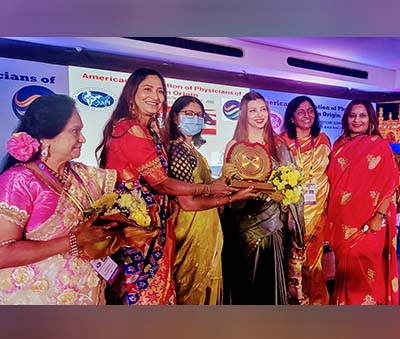 Miss India-Earth 2019, in her keynote address at the Women’s Forum during the 15th annual GHS 2022 organized by the American Association of Physicians of Indian Origin (AAPI) in Hyderabad, India, referred to how the “Nature has given us, the women a bigger responsibility of being a mother, who has a huge influence on one’s children.” Stating that her own mother “taught me the value of simple living and high thinking. She did the best to give me the best in life and gave me the path, and attitude of never giving up. Be grounded and humble in spite of all the accruements,” she said.
Miss India-Earth 2019, in her keynote address at the Women’s Forum during the 15th annual GHS 2022 organized by the American Association of Physicians of Indian Origin (AAPI) in Hyderabad, India, referred to how the “Nature has given us, the women a bigger responsibility of being a mother, who has a huge influence on one’s children.” Stating that her own mother “taught me the value of simple living and high thinking. She did the best to give me the best in life and gave me the path, and attitude of never giving up. Be grounded and humble in spite of all the accruements,” she said. Quoting the famous and inspiring words of Mother Teresa, ‘I alone cannot change the world, but I can cast a stone across the waters to create many ripples,’ Dr. Meher Medavaram, Chair of GHS Women’s Forum, and the regional director for AAPI Northeast central division, Illinois Indiana and Wisconsin, said, “This is precisely what some of these amazing women leaders are going to shed light in the women’s forum at the GHS summit!”
Quoting the famous and inspiring words of Mother Teresa, ‘I alone cannot change the world, but I can cast a stone across the waters to create many ripples,’ Dr. Meher Medavaram, Chair of GHS Women’s Forum, and the regional director for AAPI Northeast central division, Illinois Indiana and Wisconsin, said, “This is precisely what some of these amazing women leaders are going to shed light in the women’s forum at the GHS summit!”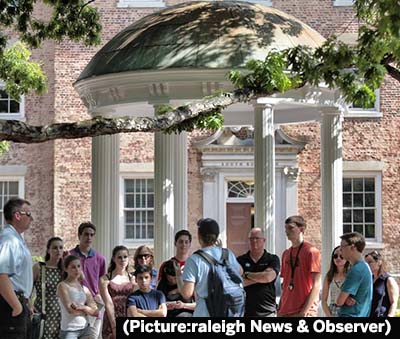 “Grutter is wrong, immoral, and unpersuasive, and has not aged well,” argued the group, Students for Fair Admissions, run by longtime preferences opponent Edward Blum.
“Grutter is wrong, immoral, and unpersuasive, and has not aged well,” argued the group, Students for Fair Admissions, run by longtime preferences opponent Edward Blum.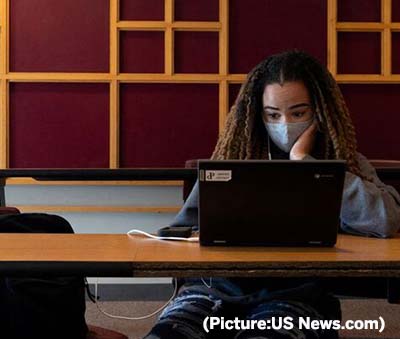 For decades, high school students applying to college would sit in rooms with other test takers and a monitor, and use a pencil to fill in bubbles on a piece of paper corresponding to their answers on the multiple-choice test. The exam is made up of a math and a reading and writing sections and is scored on a 1,600 score scale.
For decades, high school students applying to college would sit in rooms with other test takers and a monitor, and use a pencil to fill in bubbles on a piece of paper corresponding to their answers on the multiple-choice test. The exam is made up of a math and a reading and writing sections and is scored on a 1,600 score scale. About 600 young people from 11 Boston schools participated in student walkouts there, according to the school district, which serves nearly 52,000 pupils. Many protesting students returned to classrooms later, while others went home after taking part in peaceful demonstrations.
About 600 young people from 11 Boston schools participated in student walkouts there, according to the school district, which serves nearly 52,000 pupils. Many protesting students returned to classrooms later, while others went home after taking part in peaceful demonstrations. During 3iii 2021 Season-V, 6951 participants from 24 courtiers of 7 continents registered for on-line audition (Video up-load), online live audition (Zoom) and on-site audition in all 7 talent categories under two age groups of junior and senior.
During 3iii 2021 Season-V, 6951 participants from 24 courtiers of 7 continents registered for on-line audition (Video up-load), online live audition (Zoom) and on-site audition in all 7 talent categories under two age groups of junior and senior. The researchers found that the highest levels of inflammatory markers in men were found in those who had experienced the most partnership breakups. Inflammatory markers were up to 12% higher in the group who had spent seven or more years living alone.
The researchers found that the highest levels of inflammatory markers in men were found in those who had experienced the most partnership breakups. Inflammatory markers were up to 12% higher in the group who had spent seven or more years living alone.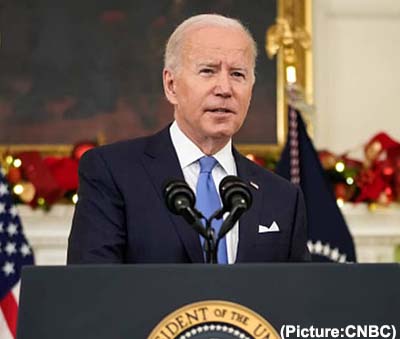 As we prepare for the return to repayment in May, we will continue to provide tools and supports to borrowers so they can enter into the repayment plan that is responsive to their financial situation, such as an income-driven repayment plan. Students and borrowers will always be at the center of our work at the Department, and we are committed to not only ensuring a smooth return to repayment, but also increasing accountability and stronger customer service from our loan servicers as borrowers prepare for repayment.”
As we prepare for the return to repayment in May, we will continue to provide tools and supports to borrowers so they can enter into the repayment plan that is responsive to their financial situation, such as an income-driven repayment plan. Students and borrowers will always be at the center of our work at the Department, and we are committed to not only ensuring a smooth return to repayment, but also increasing accountability and stronger customer service from our loan servicers as borrowers prepare for repayment.”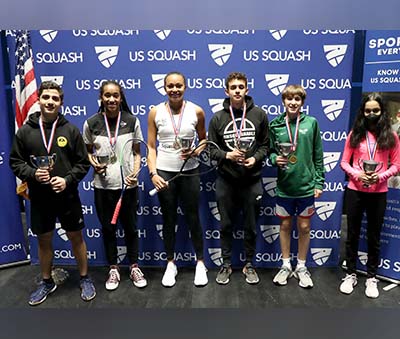 According to information received here, Anahat won the title in the Under-15 category, beating Jayda Marei from Egypt 11-9, 11-5, 8-11, 11-5. Earlier, in the semifinals, she had beaten US national champion Dixon Hill 11-8, 11-9, 11-5.
According to information received here, Anahat won the title in the Under-15 category, beating Jayda Marei from Egypt 11-9, 11-5, 8-11, 11-5. Earlier, in the semifinals, she had beaten US national champion Dixon Hill 11-8, 11-9, 11-5. In a glittery show held in Eilat overnight for a live prime time broadcast in the US, Miss India took a jaunt around the stage as directed by host Steve Harvey after he announced she had won the
In a glittery show held in Eilat overnight for a live prime time broadcast in the US, Miss India took a jaunt around the stage as directed by host Steve Harvey after he announced she had won the  The final question – “What advice would you give to young women watching on how to deal with the pressures they face today?” – was asked to each of the last three women standing. While one contestant was answering, the other two wore soundproof earphones so as not to be affected by their competitors’ answers.
The final question – “What advice would you give to young women watching on how to deal with the pressures they face today?” – was asked to each of the last three women standing. While one contestant was answering, the other two wore soundproof earphones so as not to be affected by their competitors’ answers.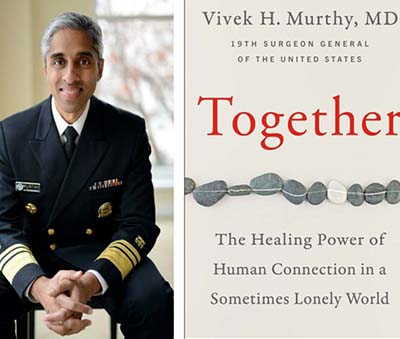 “Mental health challenges in children, adolescents, and young adults are real and widespread. Even before the pandemic, an alarming number of young people struggled with feelings of helplessness, depression, and thoughts of suicide — and rates have increased over the past decade.” Murthy is quoted saying in the press release.
“Mental health challenges in children, adolescents, and young adults are real and widespread. Even before the pandemic, an alarming number of young people struggled with feelings of helplessness, depression, and thoughts of suicide — and rates have increased over the past decade.” Murthy is quoted saying in the press release.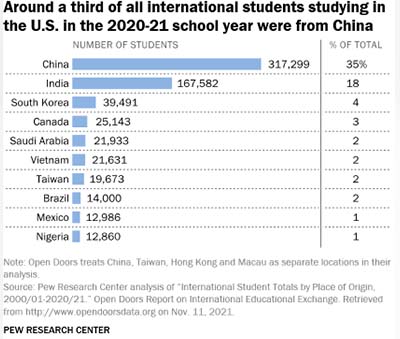 Fewer than 1 million foreign students enrolled for either online or in-person classes at U.S. universities in the 2020-21 school year, comprising 4.6% of total enrollment at American higher educational institutions. That not only marks a 15% year-over-year decrease from the 2019-20 school year, but also marks the first time since 2014-15 that fewer than a million international students have enrolled at U.S. institutions.
Fewer than 1 million foreign students enrolled for either online or in-person classes at U.S. universities in the 2020-21 school year, comprising 4.6% of total enrollment at American higher educational institutions. That not only marks a 15% year-over-year decrease from the 2019-20 school year, but also marks the first time since 2014-15 that fewer than a million international students have enrolled at U.S. institutions.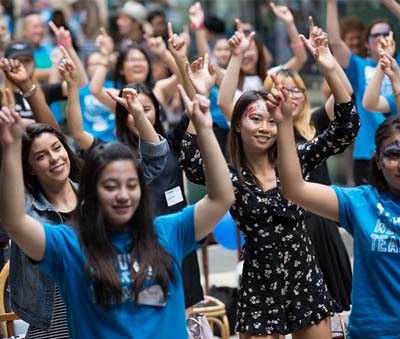 Chinese students
Chinese students 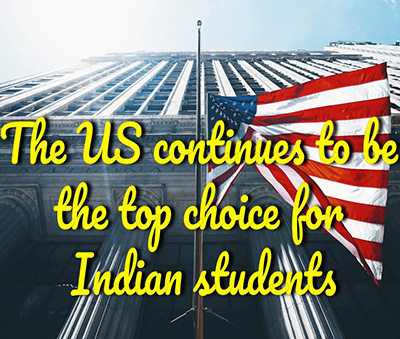 Students from China and India make up the bulk of international students in the U.S., which continues to remain the top choice for studies abroad.
Students from China and India make up the bulk of international students in the U.S., which continues to remain the top choice for studies abroad.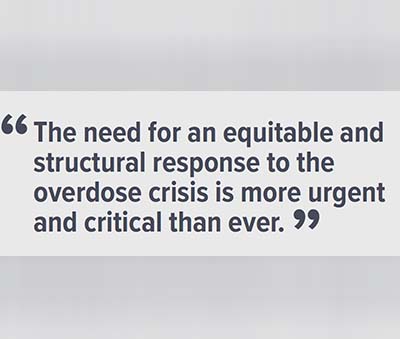 HHS
HHS 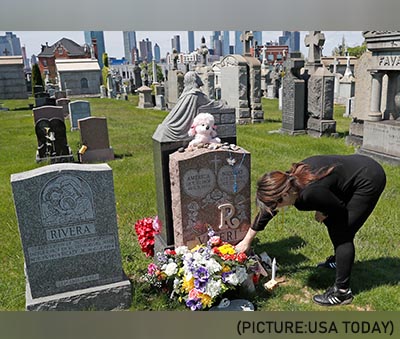 Overdose deaths have more than doubled since 2015, said the report, adding that it resulted from losing access to treatment, rising mental health problems and wider availability of dangerously potent street drugs.
Overdose deaths have more than doubled since 2015, said the report, adding that it resulted from losing access to treatment, rising mental health problems and wider availability of dangerously potent street drugs. Francis expressed thanks “for all those times when you cultivate the dream of fraternity, work to heal the wounds of God’s creation, fight to ensure respect for the dignity of the vulnerable and spread the spirit of solidarity and sharing.”
Francis expressed thanks “for all those times when you cultivate the dream of fraternity, work to heal the wounds of God’s creation, fight to ensure respect for the dignity of the vulnerable and spread the spirit of solidarity and sharing.”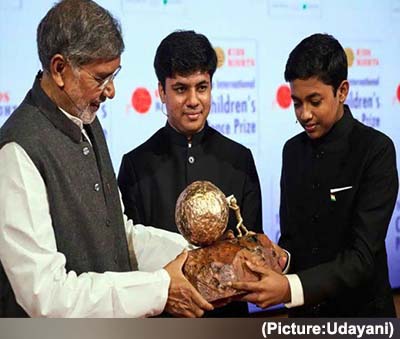 Vihaan, 17, and his 14-year-old brother, Nav, were handed the International Children’s Peace Prize by Indian Nobel Peace Prize laureate Kailash Satyarthi at a ceremony in The Hague, Netherlands.
Vihaan, 17, and his 14-year-old brother, Nav, were handed the International Children’s Peace Prize by Indian Nobel Peace Prize laureate Kailash Satyarthi at a ceremony in The Hague, Netherlands. 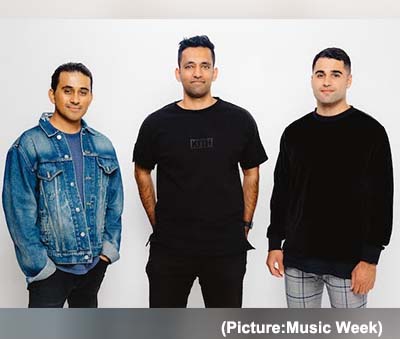 Every year Variety seeks to identify the next generation of leaders in the entertainment business who represent the creative community of film, TV, music and the digital space. The 2021 music industry group has among its ranks hip-hop label Empire’s COO, online event innovator Moment House’s CEO, the manager for Normani and Anitta, a marketing VP for Sony Nashville, an exec-manager whose dual roles include representing Megan Thee Stallion and Young Thug, the CEO of the Kluger Agency, the founder of Milk & Honey Management, a social media SVP for Warner Music, a top songwriter manager, and the agent who signed Billie Eilish at 14.
Every year Variety seeks to identify the next generation of leaders in the entertainment business who represent the creative community of film, TV, music and the digital space. The 2021 music industry group has among its ranks hip-hop label Empire’s COO, online event innovator Moment House’s CEO, the manager for Normani and Anitta, a marketing VP for Sony Nashville, an exec-manager whose dual roles include representing Megan Thee Stallion and Young Thug, the CEO of the Kluger Agency, the founder of Milk & Honey Management, a social media SVP for Warner Music, a top songwriter manager, and the agent who signed Billie Eilish at 14.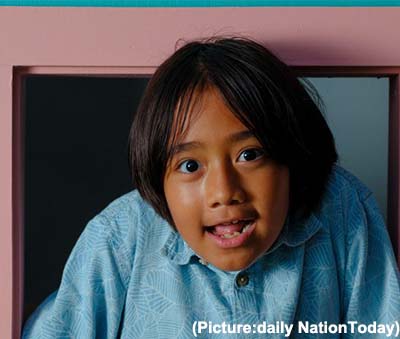 As well as a legion of YouTube videos, Ryan has shows on Nick Jr. (the Emmy-nominated Ryan’s Mystery Playdate) and Amazon Kids+ (Super Spy Ryan) and his own streaming channel. His animated superhero alter ego, Red Titan, will appear for the second time as a Macy’s
As well as a legion of YouTube videos, Ryan has shows on Nick Jr. (the Emmy-nominated Ryan’s Mystery Playdate) and Amazon Kids+ (Super Spy Ryan) and his own streaming channel. His animated superhero alter ego, Red Titan, will appear for the second time as a Macy’s 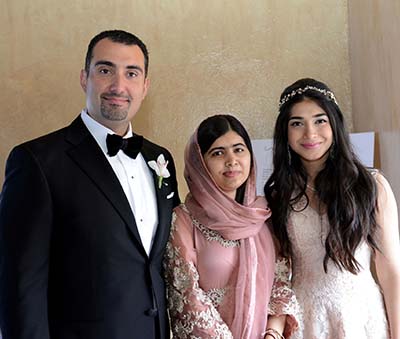 Yousafzai’s parents, Ziauddin Yousafzai and Toor Pekai Yousafzai, shared their excitement along with some photos by Malala’s friend, photographer Malin Fezehai. “It is beyond words,” Ziauddin Yousafzai
Yousafzai’s parents, Ziauddin Yousafzai and Toor Pekai Yousafzai, shared their excitement along with some photos by Malala’s friend, photographer Malin Fezehai. “It is beyond words,” Ziauddin Yousafzai 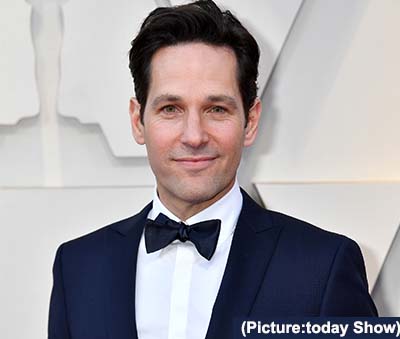 But of course, Rudd won’t turn down the honor. He jokingly hopes the new title will grant him an invitation to “those sexy dinners” with George Clooney, Brad Pitt and Michael B. Jordan — all recent winners. Other past honorees include John Legend, Dwayne Johnson, Chris Hemsworth, Idris Elba, Adam Levine, Channing Tatum and David Beckham.
But of course, Rudd won’t turn down the honor. He jokingly hopes the new title will grant him an invitation to “those sexy dinners” with George Clooney, Brad Pitt and Michael B. Jordan — all recent winners. Other past honorees include John Legend, Dwayne Johnson, Chris Hemsworth, Idris Elba, Adam Levine, Channing Tatum and David Beckham. Those questions and many more like them are completely valid and worthwhile to ask. But until about 10 years ago, my answer was something like, “It is statistically difficult, if not impossible, to answer with any degree of accuracy.” (This is how quantitative scholars talk.) Until the mid-2000s, the data that most researchers had available was limited in ways that made many potential areas of inquiry problematic.
Those questions and many more like them are completely valid and worthwhile to ask. But until about 10 years ago, my answer was something like, “It is statistically difficult, if not impossible, to answer with any degree of accuracy.” (This is how quantitative scholars talk.) Until the mid-2000s, the data that most researchers had available was limited in ways that made many potential areas of inquiry problematic.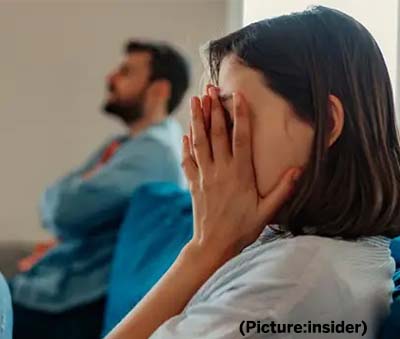 When you’re dating someone new, the romance and excitement of the “honeymoon phase” can blind you, and you may not be aware of the warning signs. Red flags like constant put-downs can signal a kind of emotional abuse, which is relatively common.
When you’re dating someone new, the romance and excitement of the “honeymoon phase” can blind you, and you may not be aware of the warning signs. Red flags like constant put-downs can signal a kind of emotional abuse, which is relatively common. Like Pfizer-BioNTech’s adult vaccine, the pediatric version is meant to be given in two doses, spaced three weeks apart. Each dose, however, is smaller than that given to adults.
Like Pfizer-BioNTech’s adult vaccine, the pediatric version is meant to be given in two doses, spaced three weeks apart. Each dose, however, is smaller than that given to adults. The FDA panel accepted
The FDA panel accepted  Be Cautious With Rewards
Be Cautious With Rewards Gin and tonic is an iconic drink that was created in India, way back in early 19th century when India was ruled by the Britishers, they mixed gin with quinine, water, and sugar to prevent malaria. This turned out to not only be a medicinal drink but an extremely good combination yielding to a flavour-some cocktail. Tonic water was born as a soda drink with quinine, and the result the classic Gin & Tonic.
Gin and tonic is an iconic drink that was created in India, way back in early 19th century when India was ruled by the Britishers, they mixed gin with quinine, water, and sugar to prevent malaria. This turned out to not only be a medicinal drink but an extremely good combination yielding to a flavour-some cocktail. Tonic water was born as a soda drink with quinine, and the result the classic Gin & Tonic. Sourav Sengupta, MD, a University at Buffalo expert in child and adolescent mental health, says one way that trusted adults can support young people is by setting age- and developmentally-appropriate boundaries. It’s not a matter of “teetotaling,” he notes: It’s about slowly teaching young people how to use social media in healthy ways.
Sourav Sengupta, MD, a University at Buffalo expert in child and adolescent mental health, says one way that trusted adults can support young people is by setting age- and developmentally-appropriate boundaries. It’s not a matter of “teetotaling,” he notes: It’s about slowly teaching young people how to use social media in healthy ways. The two took to Instagram to share the news with their fans. They captioned the post, “YA GIRLS MADE IT TO A BILLBOARD IN TimesSquare ???? This day will always be remembered. #SuPraInNY ?? Thank you @spotify and @spotifyindia for making this possible! Big love to our @vyrloriginals fam and @bandbaaja ????”
The two took to Instagram to share the news with their fans. They captioned the post, “YA GIRLS MADE IT TO A BILLBOARD IN TimesSquare ???? This day will always be remembered. #SuPraInNY ?? Thank you @spotify and @spotifyindia for making this possible! Big love to our @vyrloriginals fam and @bandbaaja ????” There’s an increased openness towards sexual exploration among the dating app’s users globally right now as per the recent global survey conducted within the app. India had the highest percentage of Bumble users (34 per cent) who respond that they are more open to exploration when it comes to sex compared to the US, UK, Australia and Canada.
There’s an increased openness towards sexual exploration among the dating app’s users globally right now as per the recent global survey conducted within the app. India had the highest percentage of Bumble users (34 per cent) who respond that they are more open to exploration when it comes to sex compared to the US, UK, Australia and Canada. Aryan (23) is currently lodged in Arthur Road prison in Mumbai after he was arrested by the Narcotics Control Bureau following alleged drug seizure from a cruise ship off the Mumbai coast on October 2.
Aryan (23) is currently lodged in Arthur Road prison in Mumbai after he was arrested by the Narcotics Control Bureau following alleged drug seizure from a cruise ship off the Mumbai coast on October 2. “We are recognizing the importance of the role of young people,” the group’s secretary-general, Azza Karam, said in an interview with Religion News Service earlier this week. “It’s essential that they have a voice.” Founded in 1970 as a forum for fostering dialogue between members of different faiths, Religions for Peace normally draws more than 1,000 delegates from around the world. This year, coronavirus restrictions restricted the gathering to just 130 in-person participants at the event. Organizers said that more than 1,700 tuned in via video link.
“We are recognizing the importance of the role of young people,” the group’s secretary-general, Azza Karam, said in an interview with Religion News Service earlier this week. “It’s essential that they have a voice.” Founded in 1970 as a forum for fostering dialogue between members of different faiths, Religions for Peace normally draws more than 1,000 delegates from around the world. This year, coronavirus restrictions restricted the gathering to just 130 in-person participants at the event. Organizers said that more than 1,700 tuned in via video link. Access, ownership and use of digital tools are not gender-neutral
Access, ownership and use of digital tools are not gender-neutral Hahn is first author of the new study, which adds critical nuance to a body of literature that explores how media content affects children. While many previous studies have focused on broad conceptualizations, like prosocial or antisocial effects that might be associated with specific content, Hahn’s study looks at how exposure to content featuring specific moral values (care, fairness, loyalty and authority) might influence the weight kids place on those values.
Hahn is first author of the new study, which adds critical nuance to a body of literature that explores how media content affects children. While many previous studies have focused on broad conceptualizations, like prosocial or antisocial effects that might be associated with specific content, Hahn’s study looks at how exposure to content featuring specific moral values (care, fairness, loyalty and authority) might influence the weight kids place on those values.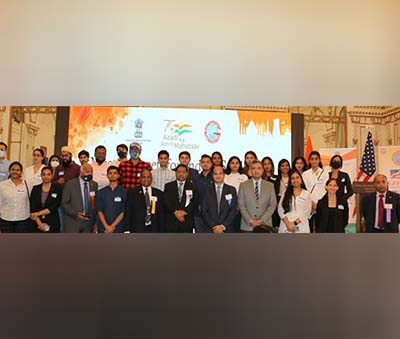 The Indian Ambassador addressed the students via a video message. He told them: “Delighted to welcome the students virtually! The education and knowledge partnership are an area that holds great potential in our bilateral relations. During my visits across US, I’ve always made it a point to visit universities and visit faculty and students there.” He further added “We have an active student hub and a dedicated student wing at the Embassy. You can count on them for any assistance.” The chief guest/host for the evening Ambassador Randhir Kumar Jaiswal, commented, “Welcome to all the students from India with open heart as you pursue your future studies here in the North-East region and help in the growth of economy here in USA and back home in India.”
The Indian Ambassador addressed the students via a video message. He told them: “Delighted to welcome the students virtually! The education and knowledge partnership are an area that holds great potential in our bilateral relations. During my visits across US, I’ve always made it a point to visit universities and visit faculty and students there.” He further added “We have an active student hub and a dedicated student wing at the Embassy. You can count on them for any assistance.” The chief guest/host for the evening Ambassador Randhir Kumar Jaiswal, commented, “Welcome to all the students from India with open heart as you pursue your future studies here in the North-East region and help in the growth of economy here in USA and back home in India.” The US, where Covid-19 is now officially the deadliest epidemic since the Spanish Flu of 1918 with over 675,000 deaths, has also seen a rather high number of infections among children. For the week ended September 9, new infections among children totaled 243,000 and constitute 30% of all new infections in the country. Up until January this year, children made up just 15% of new Covid-19 infections in the US.
The US, where Covid-19 is now officially the deadliest epidemic since the Spanish Flu of 1918 with over 675,000 deaths, has also seen a rather high number of infections among children. For the week ended September 9, new infections among children totaled 243,000 and constitute 30% of all new infections in the country. Up until January this year, children made up just 15% of new Covid-19 infections in the US.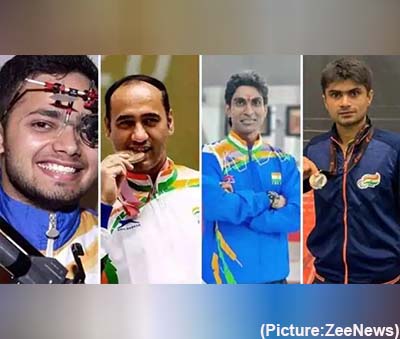 The tally also included eight silver and six bronze medals but most importantly, it was a performance during which history was scripted almost everyday with the contingent living up to the ‘Spirit in Motion’ motto of the Games.
The tally also included eight silver and six bronze medals but most importantly, it was a performance during which history was scripted almost everyday with the contingent living up to the ‘Spirit in Motion’ motto of the Games.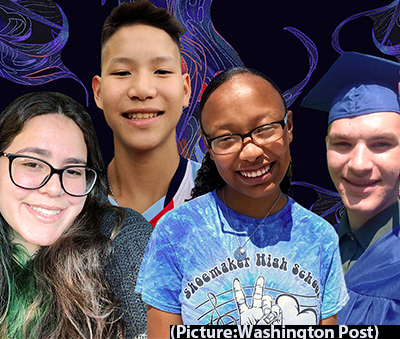 These young Americans, who are coming of age amid a once-in-a-lifetime pandemic, political and social unrest, growing economic inequality and rising crime, are keenly aware of the country’s problems. Majorities view political divisions, racial discrimination, the cost of health care and gun violence as “major threats” to their generation, according to the new Post-Ipsos poll. Nearly half also rank
These young Americans, who are coming of age amid a once-in-a-lifetime pandemic, political and social unrest, growing economic inequality and rising crime, are keenly aware of the country’s problems. Majorities view political divisions, racial discrimination, the cost of health care and gun violence as “major threats” to their generation, according to the new Post-Ipsos poll. Nearly half also rank  In the first index of its kind, published on Friday, UN children’s agency
In the first index of its kind, published on Friday, UN children’s agency 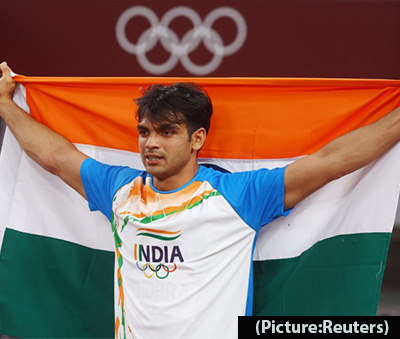 Neeraj Chopra didn’t even give it a second glance. The moment he released the javelin, he was so sure it would at least be his personal best that he turned to his coaches, and lifted his arms to celebrate. However, it wasn’t his personal best. The throw, which travelled 87.58 m,
Neeraj Chopra didn’t even give it a second glance. The moment he released the javelin, he was so sure it would at least be his personal best that he turned to his coaches, and lifted his arms to celebrate. However, it wasn’t his personal best. The throw, which travelled 87.58 m, 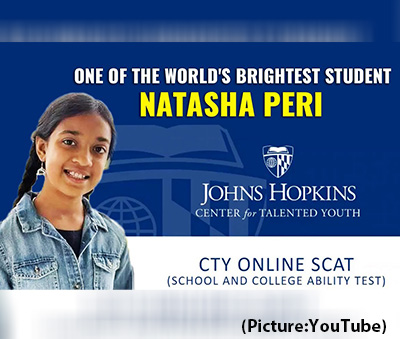 It comes on the back of an exceptional performance shown by Natasha Peri, in the Scholastic Assessment Test (SAT) and American College Testing (ACT). These are the tests that are used to determine if or not a student should be admitted to a college. Several colleges in the US use these tests as qualifying criteria to grant admission to students. She made the cut for Johns Hopkins CTY “High Honors Awards”.
It comes on the back of an exceptional performance shown by Natasha Peri, in the Scholastic Assessment Test (SAT) and American College Testing (ACT). These are the tests that are used to determine if or not a student should be admitted to a college. Several colleges in the US use these tests as qualifying criteria to grant admission to students. She made the cut for Johns Hopkins CTY “High Honors Awards”.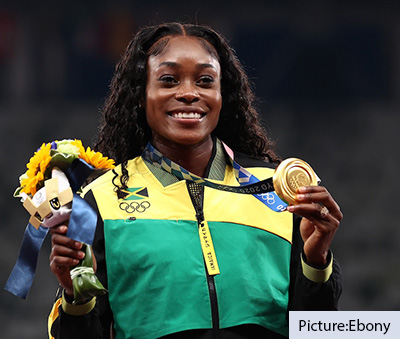 “I knew I had it in me, but obviously, I’ve had my ups and downs with injuries,” she said Saturday, referring to a persistent ailment in 2018 and 2019. “I’ve been keeping faith all this time. It is amazing.”
“I knew I had it in me, but obviously, I’ve had my ups and downs with injuries,” she said Saturday, referring to a persistent ailment in 2018 and 2019. “I’ve been keeping faith all this time. It is amazing.” Fraser-Pryce, who won the event at the Olympics in Beijing and London, came into the event trying to become the first woman to win three gold medals at this distance. The 34-year-old clocked the fastest time in the heats to qualify for the final, with a time quicker than her gold medal races.
Fraser-Pryce, who won the event at the Olympics in Beijing and London, came into the event trying to become the first woman to win three gold medals at this distance. The 34-year-old clocked the fastest time in the heats to qualify for the final, with a time quicker than her gold medal races.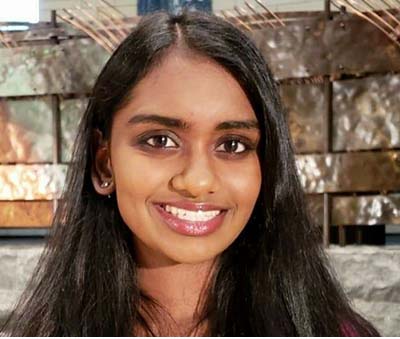 To help create love for STEM, a California-based Indian American student-run organization is inspiring young minds across the globe to the powerful impact of STEM-based studies. We Love STEM, a 501(c)(3) nonprofit founded by Ishani Das, the organization’s president, and Anusha Singhai, its vice president, provides free STEM education — science, technology, engineering and mathematics — to middle schoolers internationally, and seeks to inspire and foster a love of STEM, particularly in under-resourced communities.
To help create love for STEM, a California-based Indian American student-run organization is inspiring young minds across the globe to the powerful impact of STEM-based studies. We Love STEM, a 501(c)(3) nonprofit founded by Ishani Das, the organization’s president, and Anusha Singhai, its vice president, provides free STEM education — science, technology, engineering and mathematics — to middle schoolers internationally, and seeks to inspire and foster a love of STEM, particularly in under-resourced communities. The worry, of course, is that in-classroom learning could facilitate the ongoing spread of COVID-19. But on the positive side, a year of scientific progress means that schools may now be better equipped to prevent viral spread in their classrooms, hallways and locker rooms. Public health experts and school administrators now know that layered mitigation methods, including face masks, distancing and ventilation, can help reduce transmission. Additionally, kids over 12, as well as their teachers and parents, can get vaccinated—the best tool to prevent getting sick and to reduce the spread of the virus.
The worry, of course, is that in-classroom learning could facilitate the ongoing spread of COVID-19. But on the positive side, a year of scientific progress means that schools may now be better equipped to prevent viral spread in their classrooms, hallways and locker rooms. Public health experts and school administrators now know that layered mitigation methods, including face masks, distancing and ventilation, can help reduce transmission. Additionally, kids over 12, as well as their teachers and parents, can get vaccinated—the best tool to prevent getting sick and to reduce the spread of the virus.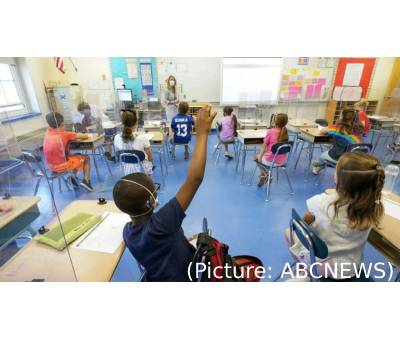 Reasons for this recommendation include but are not limited to: a significant proportion of the student population is
Reasons for this recommendation include but are not limited to: a significant proportion of the student population is 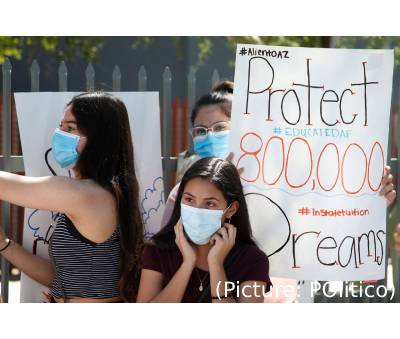 The Biden administration had no immediate response to Friday’s ruling. But the long-awaited knockdown spurred a political outcry and intensified pressure on the White House and Congress to pass an immigration measure this year. Immigrants brought to this country as children, known as “dreamers,” are among the most sympathetic of the 11 million immigrants in the United States illegally. Still, Republican and Democratic lawmakers have been unable to agree on whether to grant them legal status despite months of negotiations.Democrats are considering whether to use a budget reconciliation measure to take that action, a move that would require only a simple majority vote in the evenly divided Senate.
The Biden administration had no immediate response to Friday’s ruling. But the long-awaited knockdown spurred a political outcry and intensified pressure on the White House and Congress to pass an immigration measure this year. Immigrants brought to this country as children, known as “dreamers,” are among the most sympathetic of the 11 million immigrants in the United States illegally. Still, Republican and Democratic lawmakers have been unable to agree on whether to grant them legal status despite months of negotiations.Democrats are considering whether to use a budget reconciliation measure to take that action, a move that would require only a simple majority vote in the evenly divided Senate.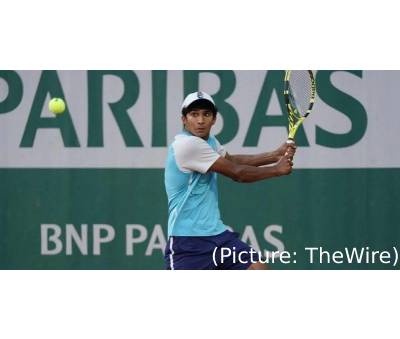 “I’m really happy with my commitment to Columbia, the coaches there I’m really buying into their vision. I think it’s a really good stepping stone. Obviously, with Indian parents, they definitely want me to go to college and not just skip the whole…and just go right to pros. And I think it would be a good character-building kind of thing, because I’m not sure if I’m fully ready to just fully go pro yet, so as of right now, I’m still probably going to go to college,” he had said. The 17-year-old right-hander from New Jersey beat Wayenburg 7-6(3), 4-6, 6-2 in two minutes short of two hours in their semi-final encounter.
“I’m really happy with my commitment to Columbia, the coaches there I’m really buying into their vision. I think it’s a really good stepping stone. Obviously, with Indian parents, they definitely want me to go to college and not just skip the whole…and just go right to pros. And I think it would be a good character-building kind of thing, because I’m not sure if I’m fully ready to just fully go pro yet, so as of right now, I’m still probably going to go to college,” he had said. The 17-year-old right-hander from New Jersey beat Wayenburg 7-6(3), 4-6, 6-2 in two minutes short of two hours in their semi-final encounter.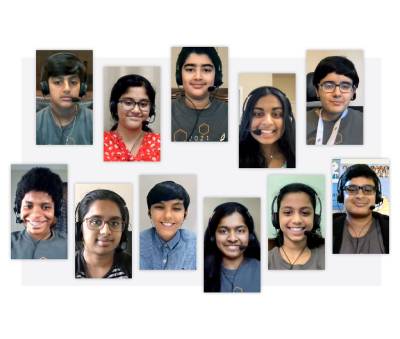 A spelling bee is a contest in which participants must spell aloud words announced by a judge. The high-profile Scripps National Spelling Bee is closely followed by students and their parents across the US and the finals are broadcast on prime-time television. This year, the winner got a cash prize of $50,000. Of the 11 finalists of the Scripps spelling bee held in the ESPN Sports Complex in Florida’s Orlando, Florida, nine were Indian-Americans. In the final round, Avant-garde was pitted against Chaitra Thummula from California, who dropped out after being unable to spell “neroli oil” correctly. Avant-garde scored her victory after spelling the word “Murraya”, a genus of tropical Australian trees.
A spelling bee is a contest in which participants must spell aloud words announced by a judge. The high-profile Scripps National Spelling Bee is closely followed by students and their parents across the US and the finals are broadcast on prime-time television. This year, the winner got a cash prize of $50,000. Of the 11 finalists of the Scripps spelling bee held in the ESPN Sports Complex in Florida’s Orlando, Florida, nine were Indian-Americans. In the final round, Avant-garde was pitted against Chaitra Thummula from California, who dropped out after being unable to spell “neroli oil” correctly. Avant-garde scored her victory after spelling the word “Murraya”, a genus of tropical Australian trees.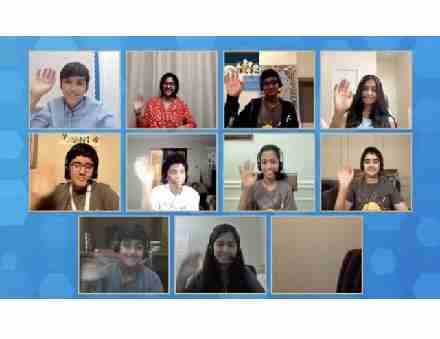 As many as 209 spellers competed on a national level, of those the 9 Indian American children qualified for semifinals held on June 27 Sunday from 7 to 11 pm on ESPN America for the championship trophy. During the in-person finals, the Bee will have the option of activating a spell-off if needed. The spell-off would be activated in the closing minutes of the competition if a champion has not yet been declared in a traditional, one-person, one-word round, it said. “We are honored to introduce our 2021 Scripps National Spelling Bee Finalists. Round after round, this group of spellers proved their mettle, and we look forward to seeing them show off their knowledge and hard work as they square off against the dictionary on the national stage,” said Dr J Michael Durnil, executive director of the Bee.
As many as 209 spellers competed on a national level, of those the 9 Indian American children qualified for semifinals held on June 27 Sunday from 7 to 11 pm on ESPN America for the championship trophy. During the in-person finals, the Bee will have the option of activating a spell-off if needed. The spell-off would be activated in the closing minutes of the competition if a champion has not yet been declared in a traditional, one-person, one-word round, it said. “We are honored to introduce our 2021 Scripps National Spelling Bee Finalists. Round after round, this group of spellers proved their mettle, and we look forward to seeing them show off their knowledge and hard work as they square off against the dictionary on the national stage,” said Dr J Michael Durnil, executive director of the Bee.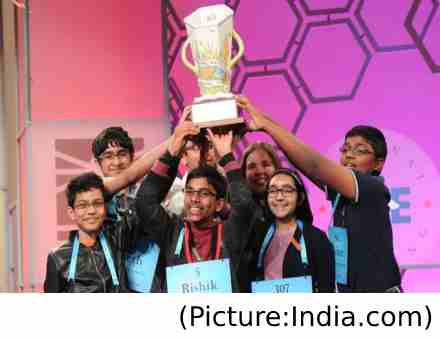 The other Indian kids to win the popular contest are AnsunSujoe and SriramHathwar in the year 2014, Arvind Mahankali in 2013, SnigdhaNandipati in 2012, Sukanya Roy in 2011 and AnamikaVeeramani in 2010. The Indian American Children have been qualifying for the US national spelling bee contest leaving their American friends behind with chances of more than 80 percent of them even winning, for the past several years. Interestingly, these Indian origin children comprise less than 1% of the total American school’s population. The Bee was cancelled in 2020 due to the
The other Indian kids to win the popular contest are AnsunSujoe and SriramHathwar in the year 2014, Arvind Mahankali in 2013, SnigdhaNandipati in 2012, Sukanya Roy in 2011 and AnamikaVeeramani in 2010. The Indian American Children have been qualifying for the US national spelling bee contest leaving their American friends behind with chances of more than 80 percent of them even winning, for the past several years. Interestingly, these Indian origin children comprise less than 1% of the total American school’s population. The Bee was cancelled in 2020 due to the 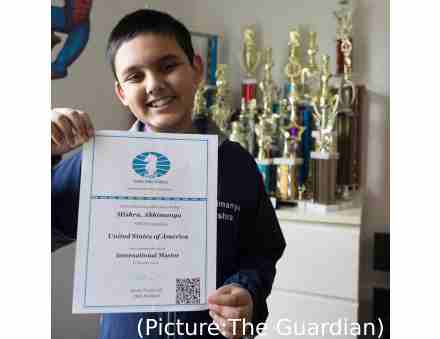 But Abhimanyu, after becoming the world’s youngest International Master last year, chased his dream and achieved the feat at the Vezerkepzo GM Mix in Budapest, a tournament organised just to give him one final shot at the title, as several chess players stayed back due to travel restrictions. Abhimanyu has been in the Hungarian capital since April, in pursuit of the record. He had attained the first and second GM norms in April and May, but the third had seemed elusive with time catching up and fewer tournaments in the horizon. He had to wait till mid-July for another shot at the record, but for this tournament.
But Abhimanyu, after becoming the world’s youngest International Master last year, chased his dream and achieved the feat at the Vezerkepzo GM Mix in Budapest, a tournament organised just to give him one final shot at the title, as several chess players stayed back due to travel restrictions. Abhimanyu has been in the Hungarian capital since April, in pursuit of the record. He had attained the first and second GM norms in April and May, but the third had seemed elusive with time catching up and fewer tournaments in the horizon. He had to wait till mid-July for another shot at the record, but for this tournament.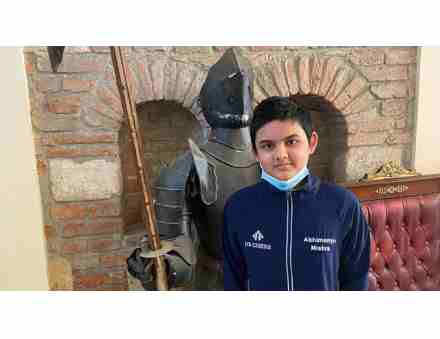 Though intense in front of the board, with large brooding eyes carefully working patterns, Abhimanyu is not an out-and-out chess buff. In fact, his sporing idol is swimmer Michael Phelps (his hero in chess is Garry Kasparov), wants to acquire a black belt in karate when he grows older, and plays a lot of video games (Brawl Stars is his favourite) with friends. But as of now, his eyes are firmly trained on the 64-square board.
Though intense in front of the board, with large brooding eyes carefully working patterns, Abhimanyu is not an out-and-out chess buff. In fact, his sporing idol is swimmer Michael Phelps (his hero in chess is Garry Kasparov), wants to acquire a black belt in karate when he grows older, and plays a lot of video games (Brawl Stars is his favourite) with friends. But as of now, his eyes are firmly trained on the 64-square board. “It was like our worst fears being confirmed,” says
“It was like our worst fears being confirmed,” says